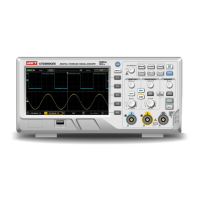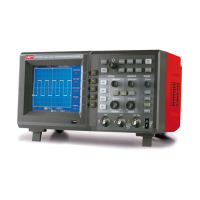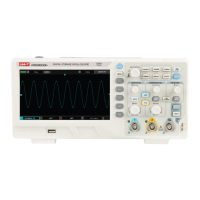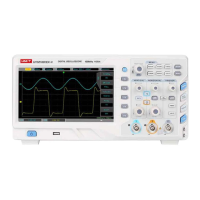UTD2000 Series User Manual
34
Since sinθ = A/B or C/D, theta (θ) is the angle between the two signals, the definition
of A, B and C, D is shown above. We can draw a difference angle θ = ± arcsin(A/B) or θ
= ± arcsin(C/D). If the principal axis of an ellipse is in quadrants I and III, then the phase
angle should be in I, IV quadrant, in 0 to (π/2) or (3π/2) to 2π. If the principal axis of an
ellipse in II, IV quadrant, then the phase angle should be (π/2) to π or π to (3π/2).
In addition, if the frequency or phase difference of the two detected signals is an
integer, the frequency and the phase relationship between the two signals can be
calculated .
Furthermore, if the frequencies and phase differences of two signals being measured
are whole multiples, you can calculate the frequency andphase correlationbetween the
twosignals.
Figure 6-3 X-YPhase difference table
User can enter the X-Y mode by press Display button and select F2. In this mode,
CH1 and CH2 are required to be applied simultaneously. Figure below shows an example
for the XY mode display.
Figure 6-4 Waveform Display in XY Mode
Attention:
The following functions will be disable at XY display mode.
■ Automatic measurement
■ Automatic measurement mode
■ Cursor measurement mode

